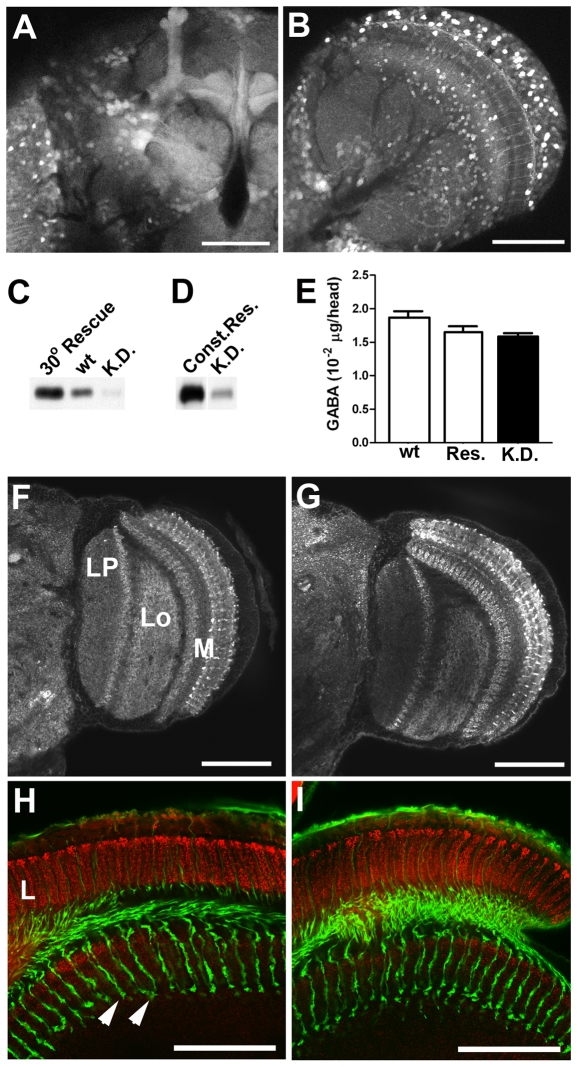Fig. 6.
Rescue using dVGAT transgenes. The expression pattern of dVGAT-GAL4 drivers on chromosome II (A) or III (B) are shown using soluble GFP as a marker. (C) Western blots of dVGATminos1, dVGAT-GAL4; UAS-dVGAT(III), tub-GAL80ts flies raised continuously at 30°C (30° Rescue) show high expression of dVGAT relative to flies shifted to 18°C at 50% pupation and then maintained at 18°C (K.D.; knockdown). Wild-type flies (wt; CS strain) raised at 25°C show an intermediate level of expression. (D) In a separate experiment dVGATminos1, dVGAT-GAL4; UAS-dVGAT(III) (constitutive rescue; Const.Res.) and dVGATminos1, dVGAT-GAL4; UAS-dVGAT(III), tub-GAL80ts flies (K.D.) were shifted in parallel from 30° to 18°C at 50% pupation. The knockdown flies had lower levels of expression than the constitutively rescued flies. (E) HPLC analysis of heads from wild-type, knockdown and constitutively rescued controls (Res.) shows similar GABA contents. (F,G) Labeling for CSP in adult heads from constitutively rescued flies (F) cannot be distinguished from labeling in knockdown (G) flies. (H,I) Co-labeling using mAb nc82 (red) and anti-HRP (green) of adult heads from constitutively rescued controls (H) and knockdown (I) animals are indistinguishable. Labeled structures in F–I include the medulla (M), lobula (Lo), lobula plate (LP), lamina (L), and photoreceptor cell processes in the medulla (arrowheads). Scale bars, (A,B,F–I) 50 μm.

